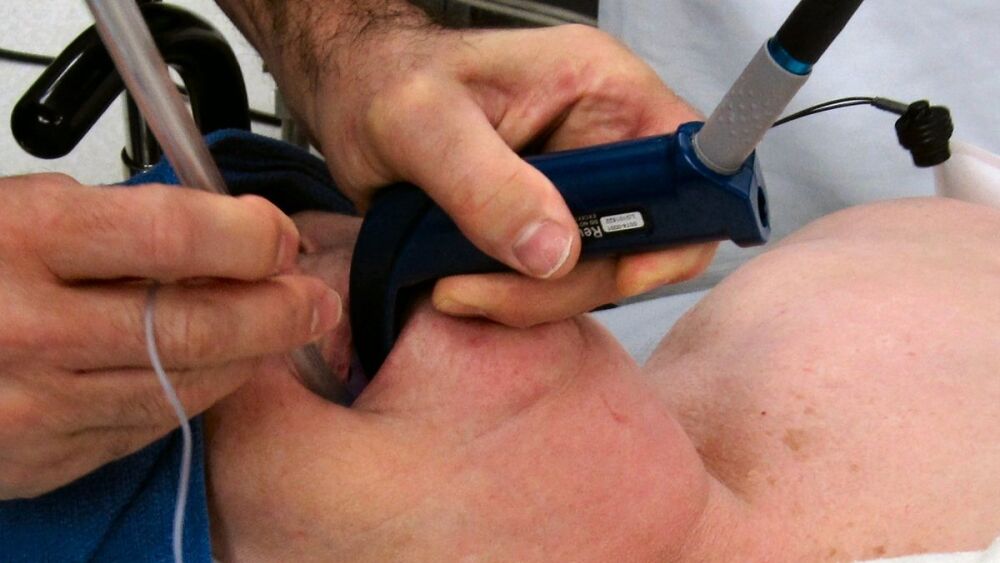AUSTIN, TEXAS — At a preconference session for the National Association of EMS Physicians Annual Meeting, Dr. Dan Spaite, a professor of emergency medicine at the University of Arizona, gave an impassioned presentation about airway management in the prehospital setting. Specifically, he argued that the focus on the airway over proper breathing management is deadly to patients, and that essentially everyone in the chain of care is guilty of this biased focus.
Spaite’s lecture was part of a larger, morning-long session titled, “All Things Airway-Airway Management in the Fresh Cadaver,” which introduced participants to various airway management devices in a realistic setting. It mixed new technology with tried-and-true techniques in a way that allowed attendees to gain a more comprehensive understanding of the options on the market.
Memorable quotes on appropriate airway management
Here are some memorable quotes on appropriate airway management from Spaite’s presentation:
“Breathing is an afterthought, this is an airway course, not a ventilation course, because otherwise, no one would come.”
“We kept this patient alive for the last 20 minutes, don’t you kill them in the next 10 minutes” (regarding hyperventilation on arrival to the emergency department).
“Ventilators were a major downgrade from iron lungs.”
“Hyperventilation is really bad for TBI.”
“Proper ventilation is remarkably gentle.”
“You need to let them be apneic if they’re not hypoxic.”
Key takeaways on appropriate airway management
Spaite left attendees with the following takeaways and bad players in appropriate airway management.
Bad player No. 1: Positive pressure ventilation
Sick patients are at a higher risk of the homeostasis that remains in their system being upended when the negative pressure dynamics of ventilation are altered. By pushing air into the lungs rather allowing it to be sucked in, the body sees an increase in intrathoracic pressure along with a decrease in venous return to the heart, mean arterial pressure, and coronary and cerebral blood flow.
Bad player No. 2: Hyperventilation
When patients are ventilated too quickly, this can increase the negative effects of positive pressure ventilation. Additionally, this speeds the rate at which CO2 is removed from the body, increasing the risk of hypocarbia and the downstream consequence of cerebral vasoconstriction.
EMS research has done little to alleviate this issue as most publications on prehospital airway management focus on the processes leading up to the successful placement of the airway device with almost no focus on how the patient is ventilated for the remaining duration of their care. This lack of delineation between the two processes means that much of what we think we know about airway management in the prehospital setting is heavily confounded.
Bad player No. 3: Over-ventilation
Spaite defined over-ventilation as high tidal volumes and/or high airway pressures, and argued that unless processes are put in place to prevent this, manual ventilations in any setting are likely too high in pressure or too high in volume.
Spaite mentioned a number of solutions to this dilemma, including:
- Using a device that provides some degree of a timing function
- Adding additional personnel to exclusively monitor ventilation, EtCO2 and oxygenation
- Using the two-finger technique to bag
- Buying a smaller bag such that providers can only push a limited volume of air into the lungs on any one breath
The intubation/hyperventilation paradox
All of these issues combine into what Spaite referred to as the “intubation/hyperventilation paradox.” This paradox acknowledges that while intubation has the potential to help protect the airway and adequately oxygenate and ventilate the patient, it also puts them at an increased risk of increased intrathoracic pressure, hyperventilation and over-ventilation.
Additional airway management resources
Learn more about airway management with these resources from EMS1:
- 5 tips for securing a patient’s airway
- 5 tips to provide safe and effective ventilation
- BVM: 3 tips to avoid over-ventilating your patient
- Progressive Paramedicine: Why and when to manage a patient’s airway
- 5 quick tips on laryngoscopy in less than 5 minutes
- Why airway management is important to patient safety
- Managing the difficult airway in EMS
- How to buy EMS airway management products















